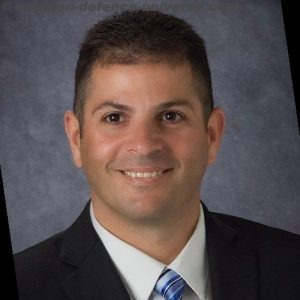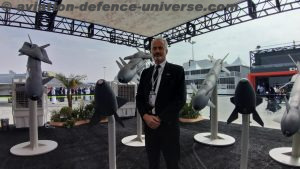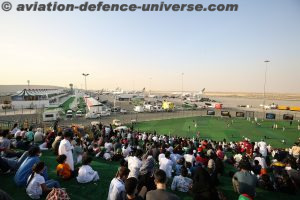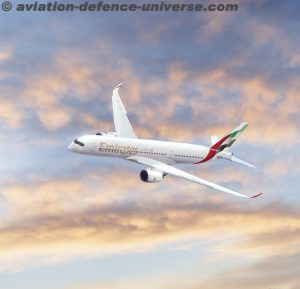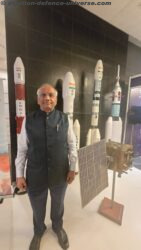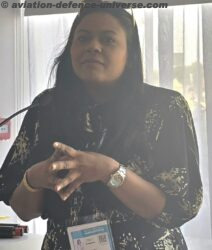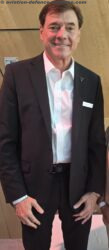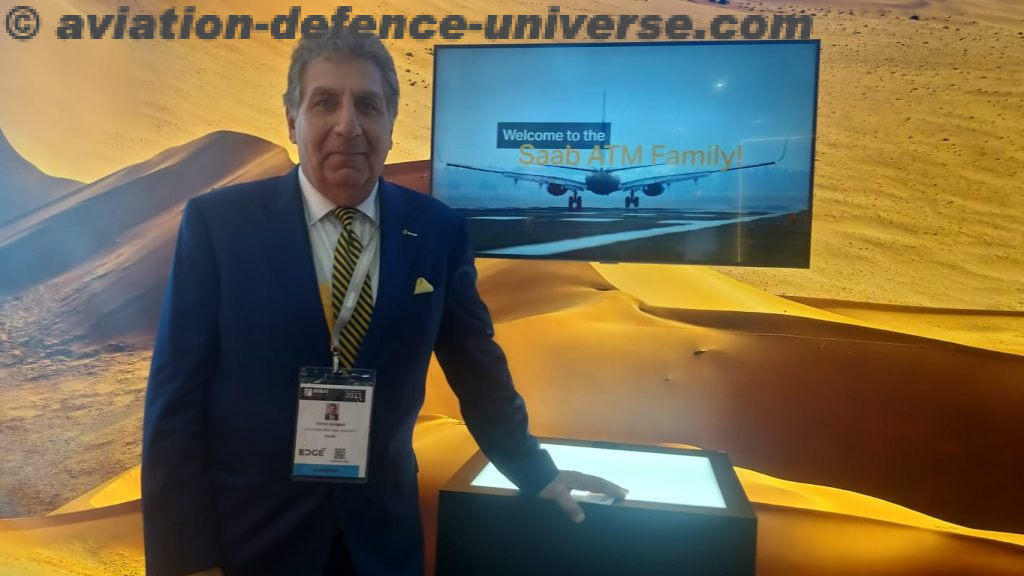
- Looks like an air traffic management revolutionis in the offing
By Sangeeta Saxena
Dubai. 20 November 2023. Distance no longer matters, location is not an issue for Air Traffic Management system created by the Swedish aerospace and defence major SAAB. It is showcasing at the Dubai Air Show 2023 the latest addition to its growing portfolio of remote/digital tower air traffic control systems, the Integrated Digital Tower Solution (i-DTS) which is aimed at major airports, initially as a “mirror” standby tower to ensure they can maintain operations in the face of adverse events, but eventually evolve into a system that could replace the traditional ATC tower.
“SAAB’s motto is to keep people and society safe and air traffic management system’s aim is to keep people safe in air. Our r-TWRs are digital towers that allow air traffic services (ATS) to be used remotely from any location. Being at an airport, air base or centralized location, distance is no longer a factor. The r-TWR functions can be integrated into a traditional tower as a hybrid solution and can support ramp and apron control using the same information. It can also be deployed and positioned if needed. Using digital camera and sensor technology, operators can effectively perform and manage various services remotely on visual surveillance. This eliminates the need to be on site and take up critical space at the airport in favor of a chosen location, “ explained David A Shomar in an exclusive interview with Aviation & Defence Universe (ADU) at Dubai Airshow 2023.
It may be recalled that in 2015, Saab went live with its first 360-degree remote control camera (r-TWR) at Sundsvall Airport in northern Sweden. Since then, the company has become a recognized pioneer in the sector, with an increasing number of its systems in operation in places such as London City and Geilenkirchen NATO Air Base. However, these systems operate primarily at smaller regional or military airports, usually with single-runway operations.
Meanwhile, the capabilities offered have grown and now include the ability to integrate the r-TWR into a traditional ATC tower system. This hybrid approach is used at Schiphol Airport in Amsterdam, where r-TWR manages the Polderbaan runway, located just outside the main airport complex. More recently, Saab added a field-deployed r-TWR solution for bare-base operations. Along with its tower solutions, Saab is developing integrated automated air traffic control systems (i-ATS) that cover a wide range of ATC functions, with systems installed at Istanbul’s new Havalimani and Singapore-Changi airports. The company has been awarded a contract to install its i-ATS at Dubai International Airport (DXB) and Al Maktoum Airport (DWC) in 2022
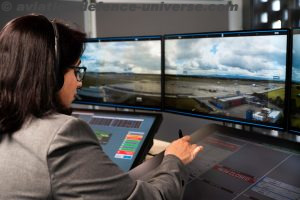 “Yes. So it fits very nicely into in doing so, SAAB offers a lot of different solutions. For air traffic management. Some of them are systems, others are systems of systems that they put them together. So some of the systems that we provide, I’ll start you with the basics, which are surveillance systems. We provide multialteration system, which are, which is a radar, but without a rotating unit. It’s units that triangulate where the aircraft is. It communicates with the transponders. We have surface movement radars that is a rotating thing, and that actually. Covers most of the time the runways, because we need the runways to be clear of that, and they do not communicate with transponders,” he added.
“Yes. So it fits very nicely into in doing so, SAAB offers a lot of different solutions. For air traffic management. Some of them are systems, others are systems of systems that they put them together. So some of the systems that we provide, I’ll start you with the basics, which are surveillance systems. We provide multialteration system, which are, which is a radar, but without a rotating unit. It’s units that triangulate where the aircraft is. It communicates with the transponders. We have surface movement radars that is a rotating thing, and that actually. Covers most of the time the runways, because we need the runways to be clear of that, and they do not communicate with transponders,” he added.
He also explained that there are non-cooperative surveillance they call while multilateralism is cooperative, it needs the aircraft intelligence stuff or the transponder. So these two systems that actually tell them where all the aircraft are on the surface. AICS is a system of systems. It takes all that surveillance information. It takes also information from other systems like the weather, things of that nature that are already existing and puts it all in one controller working position. So the controller looks at it and she sees the airport surface, where all the buildings are, where all the runways are, and where all the aircraft. So this system basically knows that, ’cause it integrates all that surveillance information into it and allows them to see behind the building.
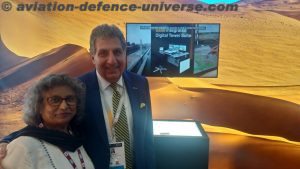
“And this system has the capability of seeing that two vectors when they’re about to intersect before they intersect, that’s called conflict alerting. We alert them, alert the controller, that you’re about to have a conflict. It could be a conflict that the two aircraft on the same runway. While one is on the runway, another aircraft is coming down. So we have to divert one or the other. There are, you know, two taxiways that don’t see each other and the SAAB system gets into conflict alerting and it alerts the controller. So now the controller has a better way of determining where conflict is. We tied it into airfield lighting system. It can determine a plan for the landing aircraft to head all the way to that following gate without interfering with other aircraft. The controller is guided, the aircraft is guided, and the pilot is guided by the lights on the air airfield surface, turning them green and red. So we now become determined to tell the aircraft, don’t push back and start your takeoff until I determine for you that you have a clear path. So all of a sudden we don’t have congestion on the airport service. You’re not powering on, powering off. It saves a lot of carbon footprint. It saves a lot of fuel, it saves a lot of time. So the aircraft doesn’t push back until the system says you. Have a clear path all the way to the runway. Okay. So we have a lot of those systems because it’s the data. Now we’re rendering all that data. We have the surveillance telling us where we’re going and for this we have the electronic flight strip, “Shomar added.
SAAB currently has its remote tower system in more than fifty airports worldwide and the i-DTS should gain popularity and become a necessity in the near future.




































